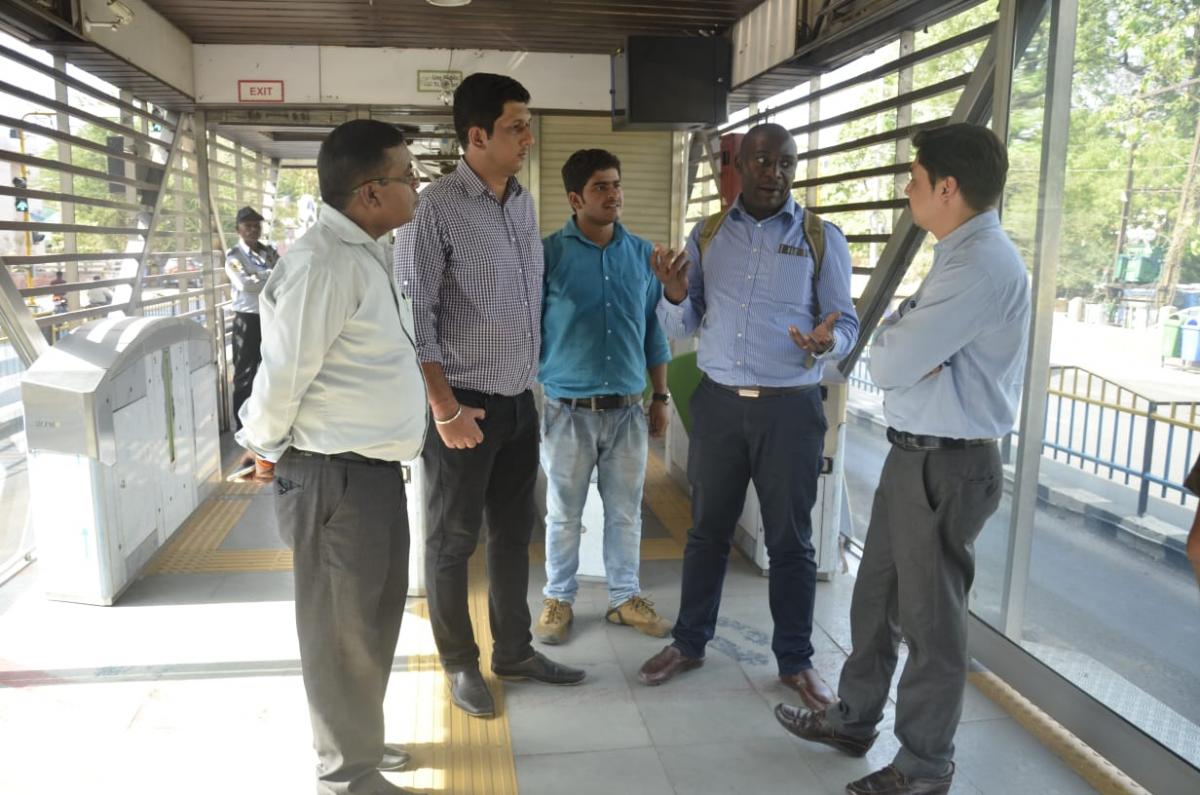India’s Bus Rapid Transit Systems: An Inspiration for Other Countries

A recent visit to India by members of DART (Dar Rapid Transit) from Tanzania shows how other countries are aspiring to replicate India’s Bus Rapid Transit (BRT) system, currently running in Ahmedabad, Indore and Bhopal. DART, which became operational in May 2016, has been working towards a sustainable transportation system that is better managed, similar to BRT systems in several Indian cities.
As one of the fastest developing countries in the world, India has the potential to inspire other countries to adopt successful citywide BRT systems. Earlier this year, DART in coordination with WRI India, visited India as part of a study tour to review BRT systems in Ahmedabad, Bhopal and Indore.
To cater to the rising need for sustainable public transport in the city, DART has been consistently working to develop and implement affordable and accessible public transport infrastructure. Their project is divided into six phases, out of which the first phase of 21.1 kilometres was completed in December 2015, with 29 stations in the route. However, in order to better understand how a rapid transit system works on a larger scale, the visit to different BRT locations was planned.

During the course of their visit, team members from DART sought to better understand how to manage high volumes of ridership, as is expected once the later phases of the project are completed. They were briefed on the operations of Ahmedabad BRTS, MyBus (Bhopal) and iBus (Indore), which are rapid transit systems that have successfully tackled high ridership volume in the most cost-effective manner. Facilitated by WRI India, DART members also gained an insight into the monitoring of rapid transit systems in these three cities, and how to tackle challenges that may arise.
The Ahmedabad tour included a visit to Janmarg’s BRT corridor and the control room. The BRT at Janmarg is one of the largest BRT systems in India, with an 80 km closed system network that ferries over 1.20 lakh passengers per day. It is one of the lifelines of public transport in the former capital of Gujarat.
After Ahmedabad, the team travelled to Indore, where they took part in a meeting with the officials at Atal Indore City Transport Service Limited (AICTL), the largest CNG-powered public transport system in Central India. This service operates through its intercity buses in five cities, namely Bhopal, Mhow, Rau, Hatod and Sawer. Indore has a daily ridership of 80,000 passengers in their iBus programme. The MyBus Transit System in Bhopal ferries close to 1.50 lakh passengers each day.

